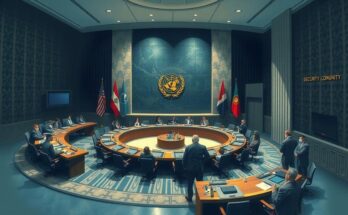The U.S. Department of State has added South Sudan to its “Do Not Travel” list, resulting in significant repercussions for tourism due to escalating violence and instability. The newly issued advisory jeopardizes travel viability, limits foreign investment, and dampens economic prospects in the region. South Sudan joins other nations grappling with similar security concerns, challenging the tourism industry’s sustainability in the face of ongoing global turmoil.
Recently, the U.S. Department of State has placed South Sudan on its highest-risk “Do Not Travel” list due to escalating violence, armed conflict, and rampant crime. This list also includes Yemen, Venezuela, Russia, Libya, Ukraine, the Central African Republic, and Haiti. As a result, the travel viability of South Sudan is effectively diminished, severely impacting an already fragile tourism sector.
The advisory was issued as global instability rises, with security concerns disrupting tourism across various regions. South Sudan has faced ongoing political instability, ethnic conflict, and weak governance, which has further deteriorated following the U.S. evacuation order for non-essential personnel on March 8, 2025, signaling a worsening security situation.
The U.S. advisory outlines risks of violent crime, such as carjackings and kidnappings, with armed groups prevalent throughout South Sudan. The easy access to weapons among civilians heightens concerns about sudden attacks. Foreign nationals, particularly journalists, are at significant risk, facing threats and possible harm for reporting activities deemed unauthorized by the South Sudanese authorities.
Despite the potential for wildlife tourism and cultural experiences in South Sudan, the travel advisory represents a significant setback. Tour operators specializing in adventure tourism are likely to experience a drastic decline in bookings, and airlines may limit or entirely suspend flight operations, complicating travel logistics.
Tourism-dependent businesses, including hotels and transportation services, will face mounting challenges to survive. Foreign investment in tourism is likely to stall, as investors typically avoid countries on the “Do Not Travel” list, stalling any future development initiatives.
The current advisory also impacts aid workers, journalists, and business professionals, who are now cautioned about the heightened risk of violence. Consequently, some organizations may curtail or entirely withdraw their operations from South Sudan, further aggravating the economic climate.
South Sudan is now grouped with other nations under strict U.S. travel advisories, each facing significant security risks that undermine tourism and business activities. Yemen’s chaos, Venezuela’s arbitrary detentions, and Russia’s hostility contribute to a larger narrative of global instability affecting travel destinations.
As conditions worsen, nations like Libya and Ukraine encounter persistent dangers and travel restrictions, while the Central African Republic and Haiti grapple with armed conflict and brutal criminal activities. These continuing advisories underscore a growing issue of declining safety in travel worldwide.
The inclusion of South Sudan on the U.S. “Do Not Travel” list reflects broader trends of increasing insecurity affecting global tourism. Travelers and businesses are now forced to reassess plans amidst rising violence in various regions, as these countries continue to search for solutions in a tumultuous security landscape.
The addition of South Sudan to the U.S. “Do Not Travel” list is indicative of a growing global travel crisis linked to instability and violence. The tourism sector in South Sudan faces dire consequences, further crippling its economy and viability as a travel destination. As many regions become increasingly dangerous, the international travel framework must adapt to these changing realities.
Original Source: www.travelandtourworld.com




